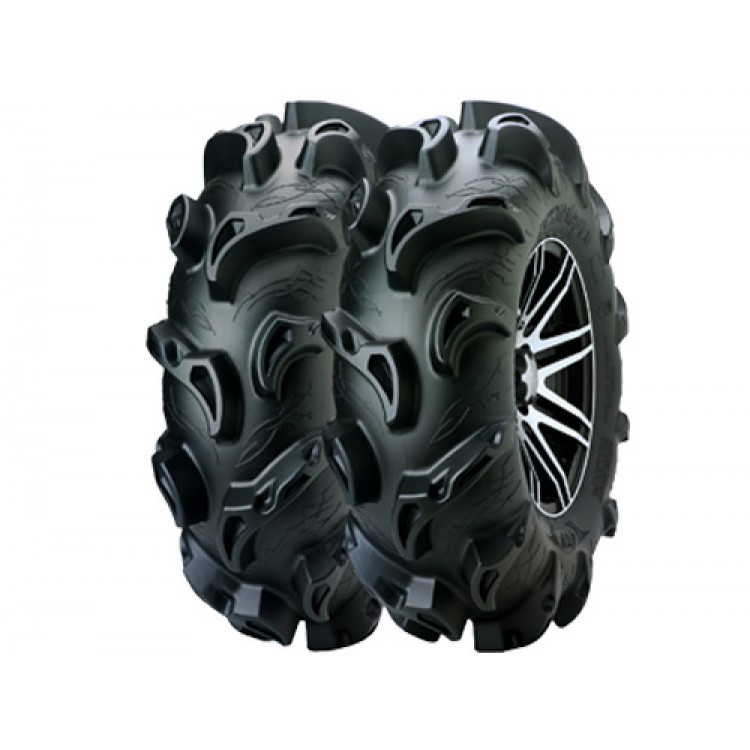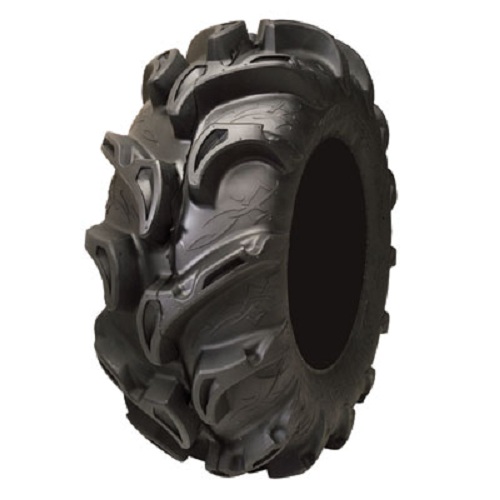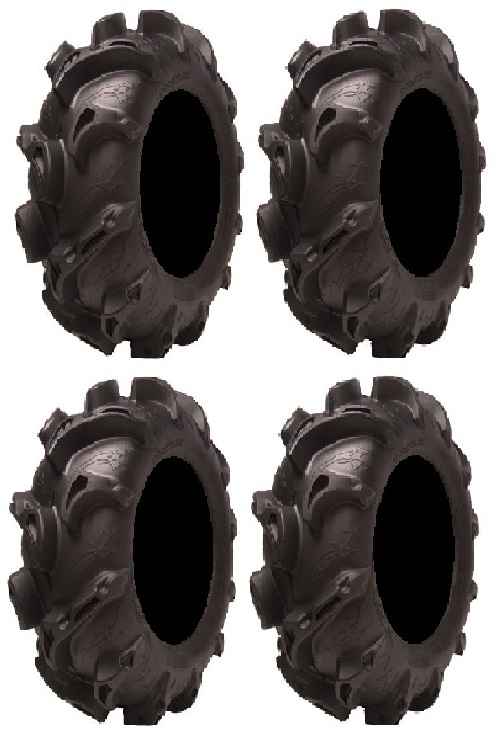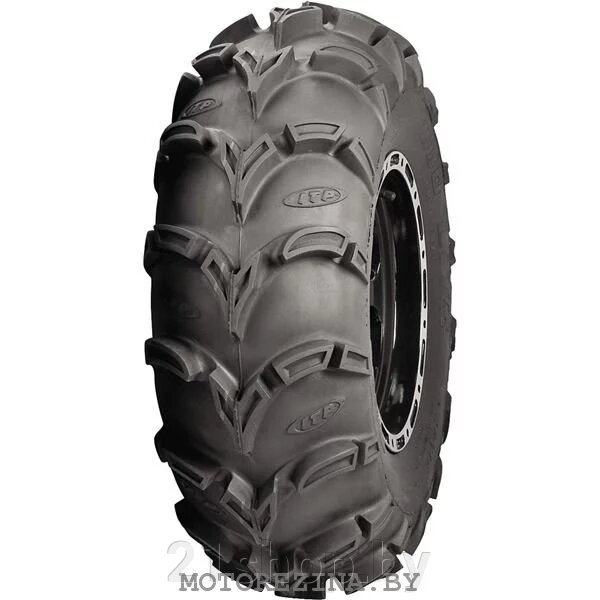Format: Summary (text)PubMedPMIDAbstract (text)CSV
Name your collection:
Name must be less than 100 characters
Choose a collection:
Unable to load your collection due to an error
Please try again
Unable to load your delegates due to an error
Please try again
Name of saved search:
Search terms:
Test search terms
Email: (change)
Which day? The first SundayThe first MondayThe first TuesdayThe first WednesdayThe first ThursdayThe first FridayThe first SaturdayThe first dayThe first weekday
Which day? SundayMondayTuesdayWednesdayThursdayFridaySaturday
Report format: SummarySummary (text)AbstractAbstract (text)PubMed
Send at most: 1 item5 items10 items20 items50 items100 items200 items
Send even when there aren't any new results
Optional text in email:
Review
. 1998 Jan;35(1 Suppl 1):14-22.
R E Ware 1 , S A Zimmerman
Affiliations
Review
R E Ware et al. Semin Hematol. 1998 Jan.
. 1998 Jan;35(1 Suppl 1):14-22.
R E Ware 1 , S A Zimmerman

Immunoglobulin that recognizes and binds specifically to the erythrocyte D antigen (anti-D globulin, WinRho SDF; Nabi, Boca Raton, FL) has recently been shown to be an effective therapy for many patients with idiopathic thrombocytopenic purpura (ITP). Its mechanisms of action are not completely understood. Intravenous (IV) infusion of anti-D into a D-positive recipient leads to antibody coating of circulating erythrocytes that are cleared primarily by the spleen. This immune-mediated clearance of sensitized erythrocytes occupies the reticuloendothelial system and allows survival of antibody-coated platelets. Based on clinical observations, experimental data, and theoretical calculations, the efficacy of anti-D therapy in ITP depends on several factors that influence the amount of erythrocyte sensitization and the rate of immune-mediated erythrocyte clearance by the spleen. Antibody characteristics, including the antibody concentration, binding affinity, and dissociation constants, may be important, as well as the number of D-antigen binding sites on the erythrocytes. Although the primary mechanism of action of anti-D is believed to be immunologic blockade of Fc receptors (FcR) within the reticuloendothelial system (RES), other immunomodulatory effects are also possible.
Antibody characteristics, including the antibody concentration, binding affinity, and dissociation constants, may be important, as well as the number of D-antigen binding sites on the erythrocytes. Although the primary mechanism of action of anti-D is believed to be immunologic blockade of Fc receptors (FcR) within the reticuloendothelial system (RES), other immunomodulatory effects are also possible.
Efficacy, safety, and dose response of intravenous anti-D immune globulin (WinRho SDF) for the treatment of idiopathic thrombocytopenic purpura in children.
Freiberg A, Mauger D. Freiberg A, et al. Semin Hematol. 1998 Jan;35(1 Suppl 1):23-7. Semin Hematol. 1998. PMID: 9523746 Clinical Trial.
The mechanisms of action of intravenous immunoglobulin and polyclonal anti-d immunoglobulin in the amelioration of immune thrombocytopenic purpura: what do we really know?
Crow AR, Lazarus AH. Crow AR, et al. Transfus Med Rev. 2008 Apr;22(2):103-16. doi: 10.1016/j.tmrv.2007.12.001. Transfus Med Rev. 2008. PMID: 18353251 Review.
Crow AR, et al. Transfus Med Rev. 2008 Apr;22(2):103-16. doi: 10.1016/j.tmrv.2007.12.001. Transfus Med Rev. 2008. PMID: 18353251 Review.
Enhanced efficacy of anti-D immunoglobulin for treating ITP is not explained by higher immunoglobulin polymer content.
Dolman C, Thorpe SJ, Thorpe R. Dolman C, et al. Biologicals. 2001 Jun;29(2):75-9. doi: 10.1006/biol.2001.0279. Biologicals. 2001. PMID: 11580212
Intravenous immunoglobulin and anti-RhD therapy in the management of immune thrombocytopenia.
Cooper N. Cooper N. Hematol Oncol Clin North Am. 2009 Dec;23(6):1317-27. doi: 10.1016/j.hoc.2009.09.002. Hematol Oncol Clin North Am. 2009. PMID: 19932436 Review.
Treatment of acute immune thrombocytopenic purpura.
Tarantino MD, Goldsmith G. Tarantino MD, et al. Semin Hematol. 1998 Jan;35(1 Suppl 1):28-35. Semin Hematol. 1998. PMID: 9523747 Review.
See all similar articles
Management of Adult Patients with Immune Thrombocytopenia (ITP): A Review on Current Guidance and Experience from Clinical Practice.
Song F, Al-Samkari H. Song F, et al. J Blood Med. 2021 Jul 26;12:653-664. doi: 10.2147/JBM.S259101. eCollection 2021. J Blood Med. 2021. PMID: 34345191 Free PMC article. Review.
Successful Use of Eltrombopag in a Pediatric Patient With Human Immunodeficiency Virus (HIV)-Associated Thrombocytopenia.
Soliman M, Engel E, Rico J, Rodriguez C. Soliman M, et al. J Pediatr Pharmacol Ther. 2019 May-Jun;24(3):242-246. doi: 10.5863/1551-6776-24.3.242. J Pediatr Pharmacol Ther. 2019. PMID: 31093025 Free PMC article.
Soliman M, et al. J Pediatr Pharmacol Ther. 2019 May-Jun;24(3):242-246. doi: 10.5863/1551-6776-24.3.242. J Pediatr Pharmacol Ther. 2019. PMID: 31093025 Free PMC article.
Trends in anti-D immune globulin for childhood immune thrombocytopenia: usage, response rates, and adverse effects.
Long M, Kalish LA, Neufeld EJ, Grace RF. Long M, et al. Am J Hematol. 2012 Mar;87(3):315-7. doi: 10.1002/ajh.22261. Epub 2011 Dec 21. Am J Hematol. 2012. PMID: 22190130 Free PMC article.
A novel laboratory technique demonstrating the influences of RHD zygosity and the RhCcEe phenotype on erythrocyte D antigen expression.
McGann PT, Despotovic JM, Howard TA, Ware RE. McGann PT, et al. Am J Hematol. 2012 Mar;87(3):266-71. doi: 10.1002/ajh.22254. Epub 2011 Nov 25. Am J Hematol. 2012. PMID: 22121029 Free PMC article.
doi: 10.1002/ajh.22254. Epub 2011 Nov 25. Am J Hematol. 2012. PMID: 22121029 Free PMC article.
RhIG for the treatment of immune thrombocytopenia: consensus and controversy (CME).
Despotovic JM, Lambert MP, Herman JH, Gernsheimer TB, McCrae KR, Tarantino MD, Bussel JB. Despotovic JM, et al. Transfusion. 2012 May;52(5):1126-36; quiz 1125. doi: 10.1111/j.1537-2995.2011.03384.x. Epub 2011 Oct 7. Transfusion. 2012. PMID: 21981825 Free PMC article. Review.
See all "Cited by" articles
Cite
Format: AMA APA MLA NLM
Send To
Biologics. 2009; 3: 57–62.
2009; 3: 57–62.
Published online 2009 Jul 13.
Author information Copyright and License information Disclaimer
Immune thrombocytopenia (ITP) is an acquired bleeding autoimmune disorder characterized by a markedly decreased blood platelet count. The disorder is variable, frequently having an acute onset of limited duration in children and a more chronic course in adults. A number of therapeutic agents have demonstrated efficacy in increasing the platelet counts in both children and adults. Anti-RhD immunoglobulin (anti-D) is one such agent, and has been successfully used in the setting of both acute and chronic immune thrombocytopenia. In this report we review the use of anti-D in the management of ITP. While the FDA-approved dose of 50 mg/kg has documented efficacy in increasing platelet counts in approximately 80% of children and 70% of adults, a higher dose of 75 μg/kg has been shown to result in a more rapid increase in platelet count without a greater reduction in hemoglobin. Anti-D is generally ineffective in patients who have failed splenectomy. Anti-RhD therapy has been shown capable of delaying splenectomy in adult patients, but does not significantly increase the total number of patients in whom the procedure can be avoided. Anti-D therapy appears to inhibit macrophage phagocytosis by a combination of both FcR blockade and inflammatory cytokine inhibition of platelet phagocytosis within the spleen. Anti-RhD treatment is associated with mild to moderate infusion toxicities. Rare life-threatening toxicities such as hemoglobinuria, acute renal failure and disseminated intravascular coagulation have been reported. Recommendations have been proposed to reduce the risk of these complications. Anti-D immunoglobulin can be an effective option for rapidly increasing platelet counts in patients with symptomatic ITP.
Anti-D is generally ineffective in patients who have failed splenectomy. Anti-RhD therapy has been shown capable of delaying splenectomy in adult patients, but does not significantly increase the total number of patients in whom the procedure can be avoided. Anti-D therapy appears to inhibit macrophage phagocytosis by a combination of both FcR blockade and inflammatory cytokine inhibition of platelet phagocytosis within the spleen. Anti-RhD treatment is associated with mild to moderate infusion toxicities. Rare life-threatening toxicities such as hemoglobinuria, acute renal failure and disseminated intravascular coagulation have been reported. Recommendations have been proposed to reduce the risk of these complications. Anti-D immunoglobulin can be an effective option for rapidly increasing platelet counts in patients with symptomatic ITP.
Keywords: immune thrombocytopenia, RhD immunoglobulin
Immune thrombocytopenia (ITP) is an autoimmune disorder characterized by a decreased number of platelets that often results in mucocutaneous bleeding. 1 ITP remains a diagnosis of exclusion. Although multiple associations have been recognized (secondary ITP), the etiology of idiopathic or primary ITP remains uncertain.1 ITP in adults typically has a remitting-relapsing course; while ITP in children typically occurs immediately after an infectious illness and most often resolves spontaneously, without further relapses.1,2 Secondary ITP has been associated with autoimmune disorders such as systemic lupus erythematosus, antiphospholipid antibody syndrome, or thyroid abnormalities, infections with human immunodeficiency virus, hepatitis C, or Helicobacter pylori, and certain hematologic malignancies.3
1 ITP remains a diagnosis of exclusion. Although multiple associations have been recognized (secondary ITP), the etiology of idiopathic or primary ITP remains uncertain.1 ITP in adults typically has a remitting-relapsing course; while ITP in children typically occurs immediately after an infectious illness and most often resolves spontaneously, without further relapses.1,2 Secondary ITP has been associated with autoimmune disorders such as systemic lupus erythematosus, antiphospholipid antibody syndrome, or thyroid abnormalities, infections with human immunodeficiency virus, hepatitis C, or Helicobacter pylori, and certain hematologic malignancies.3
Multiple mechanisms have been described in ITP, highlighting the heterogeneous nature of this disease.4 Anti-platelet auto-antibodies, directed against platelet membrane glycoproteins have been identified.4 Platelets coated with IgG auto-antibodies undergo rapid clearance through Fcγ receptors on tissue macrophages. 4 Auto-antibodies may also induce megakaryocytic apoptosis resulting in defective platelet production.4 Treatment of ITP targets different aspects of antibody-mediated platelet clearance, autoantibody production and/or immune-mediated defective platelet production.5
4 Auto-antibodies may also induce megakaryocytic apoptosis resulting in defective platelet production.4 Treatment of ITP targets different aspects of antibody-mediated platelet clearance, autoantibody production and/or immune-mediated defective platelet production.5
Common first-line treatments of ITP are intended to inhibit autoantibody-mediated platelet clearance. These would include the use of corticosteroids (such as prednisone, dexamethasone), intravenous immunoglobulin (IVIg) and anti-RhD immunoglobulin (anti-D).5 Other therapies may target autoantibody production as well as platelet clearance and can include splenectomy, danazol, azathioprine, cyclosphosphamide and anti-CD20 therapy with rituxamab.5 Recently, romiplostim, a thrombopoietin receptor agonist, has been approved for the treatment of refractory ITP.6 In this review we will focus on the use of anti-D immunoglobulin in the treatment of ITP.
Anti-RhD immunoglobulin is composed of immunoglobulin G (IgG) prepared from the plasma of repeatedly immunized human RhD-negative donors. Anti-D IgG is manufactured from the plasma of donors and contains >90% polyclonal immunoglobulin G anti-D.7 The concentration of IgG1, IgG2, and IgG3 are comparable to those of normal serum while the levels of IgG4 are negligible.7,8 There are also minimal concentrations of antibodies against other red blood cell antigens.
Anti-D IgG is manufactured from the plasma of donors and contains >90% polyclonal immunoglobulin G anti-D.7 The concentration of IgG1, IgG2, and IgG3 are comparable to those of normal serum while the levels of IgG4 are negligible.7,8 There are also minimal concentrations of antibodies against other red blood cell antigens.
Anti-RhD was originally prepared to prevent hemolytic disease in newborns.9 Since 1983, it has been used to treat patients with immune thrombocytopenia.9,10 In March of 1995, anti-D immunoglobulin was licensed by the United States Food and Drug Administration for the treatment of immune thrombocytopenic purpura in non-splenectomized children with acute ITP who were RhD-positive and children and adults with ITP secondary to human immunodeficiency infection.8
In 1984, Salama et al published the first results on the use of intravenous anti-D in 10 Rh-positive ITP patients. 9,10 The patients had chronic ITP with the duration of their disease ranging from 1 to 21 years. Nine patients were female, of whom 4 had previous splenectomy. They received an initial intravenous dose of 200 to 1000 μg of anti-D immunoglobulin for a total dose of 300 to 3600 μg. On average, the platelets increased by 80%. The platelet counts of splenectomized patients increased by 16 × 109/L while the average increase in non-splenectomized patients was 60 × 109/L. The increased platelet count lasted from 7 to over 150 days. A transient but mild hemolysis was observed in 7 of 10 patients.
9,10 The patients had chronic ITP with the duration of their disease ranging from 1 to 21 years. Nine patients were female, of whom 4 had previous splenectomy. They received an initial intravenous dose of 200 to 1000 μg of anti-D immunoglobulin for a total dose of 300 to 3600 μg. On average, the platelets increased by 80%. The platelet counts of splenectomized patients increased by 16 × 109/L while the average increase in non-splenectomized patients was 60 × 109/L. The increased platelet count lasted from 7 to over 150 days. A transient but mild hemolysis was observed in 7 of 10 patients.
In 1986, Panzer et al compared the efficacy of IVIg (0.4 g/kg × 5 days) with anti-D (11–20 μg/kg × 5 days) in 5 patients with ITP, 2 of whom were children.11 The one child with acute ITP who received anti-D had a platelet increase of 11 × 109/L while the child with chronic ITP had a platelet increase of 22 × 109/L. Neither child had a significant decrease in their hemoglobin levels. In the same year, a collaborative study of 15 Rh-positive children with ITP were treated with low-dose anti-D (28–50 μg/kg intravenously) was reported by Becker and colleagues.12 Ten patients had chronic ITP (duration of 6–47 months), while 5 had acute ITP. All patients had resolution of their bleeding and increased in platelet counts without a significant decrease in their hemoglobin or other adverse effects exclusive of minor transfusion related symptoms.12 In the children with chronic ITP the duration of the platelet count increase ranged from 10 to over 360 days.
Neither child had a significant decrease in their hemoglobin levels. In the same year, a collaborative study of 15 Rh-positive children with ITP were treated with low-dose anti-D (28–50 μg/kg intravenously) was reported by Becker and colleagues.12 Ten patients had chronic ITP (duration of 6–47 months), while 5 had acute ITP. All patients had resolution of their bleeding and increased in platelet counts without a significant decrease in their hemoglobin or other adverse effects exclusive of minor transfusion related symptoms.12 In the children with chronic ITP the duration of the platelet count increase ranged from 10 to over 360 days.
In 1991, Bussel et al treated 46 patients with ITP, of which 20 were children.13 Anti-D was given at a treatment dose of 50 μg/kg.13 Of the 20 children, 14 had ITP for greater than 6 months and 3 children were HIV-positive. Platelet increases were greater in children than adults (median 92 × 109/L versus 26 × 109/L). Of the 14 children with chronic disease, 2 achieved remission and 3 became stable after 5 treatments.
Of the 14 children with chronic disease, 2 achieved remission and 3 became stable after 5 treatments.
Andrew et al performed a multicenter cohort study of escalating doses of intravenous anti-D in children with chronic ITP (greater than 6 months’ duration).14 Twenty-five Rh-positive children received doses of anti-D that increased from 25 μg/kg upwards to 55 μg/kg. By day 7 of the protocol, 23 patients had responded to therapy, 18 of whom had platelet counts greater than 150,000/μL. The median duration of response was 5 weeks (range 1 to 24 weeks). Of the 23 responding patients, 21 were retreated and 18 responded to the second course of therapy. By the completion of the study, 16 patients continued to have excellent responses to intermittent anti-D therapy.
A randomized study of 146 children with acute ITP with platelet counts below 20,000/μL compared high dose IVIg (1 g/kg × 2 days or 0.8 g/kg × 1), intravenous anti-D (25 μg/kg × 2 days), or oral prednisone (4 mg/kg/day with tapering and discontinuation by day 21). 15 The increase in platelets was significantly faster for patients receiving IVIg compared to anti-D. The hemoglobin fell to less than 10 g/dL in 24% of the patients receiving anti-D. The authors were unable to recommend anti-D as initial therapy for children with acute ITP with platelet counts lower than 20,000/μL. Borgna-Pignatti et al published a series on 7 pediatric patients with chronic ITP who were treated with intramuscular anti-D for 5 times on an alternate-day basis.16 Five patients responded to therapy, 2 of whom went into long-term remission. No patient experienced significant anemia despite evidence of low-grade hemolysis.
15 The increase in platelets was significantly faster for patients receiving IVIg compared to anti-D. The hemoglobin fell to less than 10 g/dL in 24% of the patients receiving anti-D. The authors were unable to recommend anti-D as initial therapy for children with acute ITP with platelet counts lower than 20,000/μL. Borgna-Pignatti et al published a series on 7 pediatric patients with chronic ITP who were treated with intramuscular anti-D for 5 times on an alternate-day basis.16 Five patients responded to therapy, 2 of whom went into long-term remission. No patient experienced significant anemia despite evidence of low-grade hemolysis.
In 1997, Scaradavou et al published the largest study of anti-D use in ITP patients.17 Two hundred seventy-two patients were treated, including 124 children and 137 adult chronic ITP patients, of which 105 patients (children and adults) were HIV-positive. An additional 11 post-splenectomy patients were also treated. The patients received 25 or 50 μg/kg/dose of intravenous anti-D, with the post-splenectomy patients receiving 100–200 μg/kg/dose. The best treatment responses were observed in the HIV-negative children. HIV-negative pediatric patients had a significantly higher mean platelet increase (119,000 × 109/L) when compared to the HIV-infected children (65 × 109/L; p = 0.005). Also the number of responding HIV-negative children (83%) was significantly greater than that observed in the HIV-negative adults (69%; p = 0.05). Anti-D therapy at doses given was again shown to be ineffective in patients who failed splectectomy. The inability of the drug to work in this patient population may reflect of different pathophysiology of the disease in splenectomy failures such a antibody mediated defective megakaryopoiesis.18
The best treatment responses were observed in the HIV-negative children. HIV-negative pediatric patients had a significantly higher mean platelet increase (119,000 × 109/L) when compared to the HIV-infected children (65 × 109/L; p = 0.005). Also the number of responding HIV-negative children (83%) was significantly greater than that observed in the HIV-negative adults (69%; p = 0.05). Anti-D therapy at doses given was again shown to be ineffective in patients who failed splectectomy. The inability of the drug to work in this patient population may reflect of different pathophysiology of the disease in splenectomy failures such a antibody mediated defective megakaryopoiesis.18
Immune thrombocytopenia in adults is most often chronic in nature. Many patients, requiring multiple therapeutic interventions. Anti-D treatment, along with intravenous Ig, remains one of the few non-immunosuppressive therapies capable of acutely increasing platelet counts in patients with severe thrombocytopenia.
Two years following his 1984 publication, Salama reported a study of anti-D treatment in 17 adults patients with ITP (15 chronic ITP patients and 2 acute ITP).19 The patients were given intravenous and/or intramuscular injections of anti-D. An average increase in the platelet count of 50 × 109/L was achieved in 13 of the Rh-positive patients and none of the Rh-negative patients.19 A long-term response of greater than 5 months was achieved in 5 patients. Overt hemolysis was observed in one patient.19 Rossi and colleagues treated 13 adult HIV-positive ITP patients with varying doses of anti-D.20 A mean platelet count increase to greater than 100 × 109/L was observed and response was associated with a decrease in the patients’ hemoglobin ranging between 1 and 1.7 g/dL.
Boughton et al reported a study of 13 Rh-positive adult patients with chronic ITP who received varying intravenous doses of anti-D.21 Significant increases in platelet counts were seen in all patients, especially those who received 12,500 IU of anti-D. No adverse effects were observed in the patient groups. In the same year, Oksenhendler examined the effects of intravenous anti-D (12–25 μg/kg × 2 days) on 17 adult HIV-positive ITP patients with platelet counts less than 20 × 109/L.22 Nine patients (53%) had a significant increase in their platelet counts to greater than 50 × 109/L.
No adverse effects were observed in the patient groups. In the same year, Oksenhendler examined the effects of intravenous anti-D (12–25 μg/kg × 2 days) on 17 adult HIV-positive ITP patients with platelet counts less than 20 × 109/L.22 Nine patients (53%) had a significant increase in their platelet counts to greater than 50 × 109/L.
In 1992, Gringeri et al performed a prospective study in 51 ITP patients, 24 of whom were HIV-positive.23 Patients who responded to intravenous anti-D (3 μg/kg × 3 days) received intramuscular injections of anti-D (6 μg/kg/week). Twenty of the 24 HIV-positive ITP patients had a platelet response as opposed to 14 of the 27 idiopathic chronic ITP patients. In the same year, Rodeghiero et al published the results of 49 adult patients treated with high-dose IVIg or anti-D.24 Response and remission rates did not vary significantly among the two groups.24
As mentioned earlier, the largest study to date was published in 1997 by Scaradavou et al. 17 In this study, 137 adult patients, including both HIV negative and positive patients, were treated with anti-D. In contrast to the results observed in the pediatric patients, HIV infection of adult ITP patients did not influence their response to anti-D. Baseline hemoglobin significantly affected platelet response to anti-D in adults with the mean platelet increase (51 × 109/L versus 21 × 109/L) and response rate (72% versus 42%) significantly higher in patients with hemoglobin levels ≥ 12 g/dL.
17 In this study, 137 adult patients, including both HIV negative and positive patients, were treated with anti-D. In contrast to the results observed in the pediatric patients, HIV infection of adult ITP patients did not influence their response to anti-D. Baseline hemoglobin significantly affected platelet response to anti-D in adults with the mean platelet increase (51 × 109/L versus 21 × 109/L) and response rate (72% versus 42%) significantly higher in patients with hemoglobin levels ≥ 12 g/dL.
The approved dosing regimen for anti-D therapy in the United States is 50 μg/kg. However, significant questions remain as to whether higher doses may be safe and more efficacious. Newman and colleagues, reported on a randomized study comparing 75 μg/kg anti-D to the approved dose of 50 μg/kg.25 Previous studies reported that a maximal platelet response to 50 μg/kg/d occurred 72 hours after intravenous infusion. Twenty-seven adult, HIV-negative, non-splenectomized patients with initial platelet counts less than 30 × 109/L were studied. The 75 μg/kg/day dose resulted in greater median platelet increases on days 1 and 7, when compared with the 50 μg/kg dose, without a significantly greater decrease in hemoglobin.25
The 75 μg/kg/day dose resulted in greater median platelet increases on days 1 and 7, when compared with the 50 μg/kg dose, without a significantly greater decrease in hemoglobin.25
Cooper et al examined whether repeated infusions of anti-D could allow adults ITP patients, who had failed initial corticosteroid therapy, avoid splenectomy.26 Twenty-eight adult patients with platelet counts of less than 30 × 109/L were repeatedly treated with anti-D whenever their platelet count decreased to less than 30 × 109/L. A response was defined as an incremental platelet increase greater than 20 × 109/L with an absolute value greater than 30 × 109/L within 7 days of therapy. Twenty-six (93%) patients responded to initial anti-D treatment and 19 patients (68%) responded to repeated treatments. After a median follow-up of 26 months, 19 patients avoided splenectomy; including 12 (43%) patients who were off treatment for more than 6 months without requiring a splenectomy. At study entry, a platelet count greater than 14 × 109/L was a primary predictor for patients more likely to successfully discontinue treatment with anti-D.26
At study entry, a platelet count greater than 14 × 109/L was a primary predictor for patients more likely to successfully discontinue treatment with anti-D.26
In a second randomized study to evaluate the use of anti-D as an alternative to corticosteroid therapy in patients who wish to avoid or delay splenectomy, 70 patients were randomized to either anti-D or corticosteroid therapy. A splenectomy was to be performed if a patient failed to respond to 3 consecutive anti-D treatments given within 10 days.27 Patients treated with repeat doses of anti-D were able to avoid splenectomy for a median duration of 112 days as opposed to 36 days in the corticosteroid treated group and required fewer days of corticosteroid therapy. However, splenectomy was performed prematurely against study protocol in 11of the 14 patients randomized to anti-D treatment and there was no statistical difference in the total number of patients in either treatment arm who subsequently had a splenectomy. 27
27
Multiple mechanisms whereby anti-D ameliorates thrombocytopenia have been proposed, including mononuclear phagocytic system (MPS) blockade, and cytokine modulation.28–30
The largest body of evidence exists for the competitive inhibition and blockade of the mononuclear phagocytic system by sensitized red blood cells within the spleen. Evidence to support this as a major mechanism of the therapy include multiple studies which show that anti-D is ineffective in RhD antigen-negative patients and relatively ineffective at standard doses in patients who have had a splenectomy. In vitro studies of cytokine expression from human monocytes and granulocytes exposed to anti-D coated red blood cells have demonstrated enhanced secretion of interleukin 1 receptor antagonist resulting in down-regulation of FcγR mediated phagocytosis.28 Murine models of ITP have demonstrated that RBC-specific antibodies can increase platelet counts by down-regulating FcγRIIIa on splenic macrophage in a manner dissimilar to IVIg. 29
29
A study evaluating the cytokine responses to infusions of IVIg and anti-D in patients with ITP demonstrated significant increases in interleukin 6 and 10, monocyte chemo-attractant protein-1, and tumor necrosis factor α within 2 hours of infusion of anti-D.30 Higher levels of Il-10 correlated with the greatest platelet increases at 24 hours. Patients with FcγIIa-131HH genotype had higher cytokine responses and patients with FcγIIIa-158VF had higher platelet counts by day 7.30 It would appear from these studies that anti-D therapy induces an initial inflammatory cytokine response mediated through the FcγIIa receptor leading to a secondary suppression of FcγRIIIa mediated platelet phagocytosis. This is significantly different from the anti-inflammatory effect of IVIG in which FcγIIIa and FcγIIa receptors are down-regulated by interaction of IVIG with FcγIIB receptors.28–31
In the original anti-D IGIV clinical trials for ITP, 2 cases of acute onset hemoglobinuria consistent with intravascular hemolysis were noted. 32 Additional cases of acute hemoglobinemia and hemoglobinuria have subsequently been reported to the FDA.33 In April of 1998, the manufacturers of anti-D revised the package insert to include reports of hemoglobinuria that was occasionally accompanied by reversible, acute renal impairment.8
32 Additional cases of acute hemoglobinemia and hemoglobinuria have subsequently been reported to the FDA.33 In April of 1998, the manufacturers of anti-D revised the package insert to include reports of hemoglobinuria that was occasionally accompanied by reversible, acute renal impairment.8
Gaines reviewed 11 patient reports of hemoglobinuria and noted that 7 of these patients developed significant anemia that required packed red blood cell transfusion orders.33 Eight patients experienced new onset or an exacerbation of pre-existing renal insufficiency and 2 patients required dialysis. One patient died from pulmonary edema and respiratory distress associated with exacerbated anemia. The authors conjectured several possible mechanisms, including concomitant disorders associated with immune-mediated hemolysis such as undiagnosed Evan’s syndrome; Rh phenotype with high expression of D antigen; splenic saturation and resulting diminished capacity for clearance of anti-D-sensitized RBCs; the formation of complement fixing immune complexes in vivo involving anti-D IgG1 or IgG3 aggregates with anti-idiotype antibodies in anti-D immunoglobulin that bind to the red cell initiating complement-mediated hemolysis; or improper storage and reconstitution techniques of anti-D. 33
33
Gaines subsequently published a review of disseminated intravascular coagulation (DIC) reported to the FDA following anti-D administration.34 This case series included 6 patients, 1 child and 5 adults, all of whom died. Gaines conjectured the DIC was causally related to hemoglobinemia and perhaps associated with the passive acquisition of blood group antibodies in anti-D immunoglobulin preparation, including high-titer anti-D, low-titer anti-A, anti-B, anti-C, anti-E, anti-Duffy, and anti-Kidd antibodies.34
In a letter to the editor, Tarantino et al proposed a “2-hit” phenomenon responsible for the intravascular hemolysis, DIC, and the renal failure sometimes seen after anti-D administration.35 Conditions that could have contributed to these complications with anti-D treatment include coexisting autoimmune hemolytic anemia (Evan’s syndrome), antiphospholipid antibodies, pre-existing renal insufficiency, and high cytokine induced hemostatic activation. 35 The authors of the letter recommended examining for hematuria and hemoglobinuria 48 hours after anti-D infusion, screening for and avoiding use of the drug in patients with evidence of possible underlying hemolysis as suggested by an elevated reticulocyte count, and in patients at high risk for hemolysis such as those with positive direct red blood cell antibody test results.35
35 The authors of the letter recommended examining for hematuria and hemoglobinuria 48 hours after anti-D infusion, screening for and avoiding use of the drug in patients with evidence of possible underlying hemolysis as suggested by an elevated reticulocyte count, and in patients at high risk for hemolysis such as those with positive direct red blood cell antibody test results.35
Anti-D immunoglobulin therapy has demonstrated efficacy in rapidly increasing the platelet counts in nearly 80% of children and 70% of adults with ITP. It appears to be effective only in patients with an intact spleen. However, anecdotal reports of efficacious use in splenectomized patients suggest the there may be some utility in selected patients. A more systematic study of its use in splenectomized patients may be indicated. While a higher dose of 75 μg/kg has shown in one study to result in a more rapid increase in the platelet count, it is uncertain whether this increase in the rate of response is of significant clinical benefit. Anti-D therapy appears to have significant advantages over the use of intravenous immunoglobulin in regards to expense and a longer duration of response.17 While intermittent use of anti-D can be used to delay time to splenectomy in patients with chronic ITP, it does not appear to change the natural history of this disorder. It can allow for time for a small number of patients (15%) developing a spontaneous remission prior to splenectomy. However, it is uncertain whether use of the newer thrombopoietin receptor agonists could accomplish the same delay in splenectomy with less toxicity.6 Finally, while severe and life-threatening toxicities are rare with anti-D therapy, recent recommended guidelines for its use can reduce the risk of these serious events.35 Recombinant monoclonal and polyclonal anti-D antibodies have begun to be tested for autologous red cell clearance and a determination of their utility in the management of ITP awaits the results of further clinical studies.
Anti-D therapy appears to have significant advantages over the use of intravenous immunoglobulin in regards to expense and a longer duration of response.17 While intermittent use of anti-D can be used to delay time to splenectomy in patients with chronic ITP, it does not appear to change the natural history of this disorder. It can allow for time for a small number of patients (15%) developing a spontaneous remission prior to splenectomy. However, it is uncertain whether use of the newer thrombopoietin receptor agonists could accomplish the same delay in splenectomy with less toxicity.6 Finally, while severe and life-threatening toxicities are rare with anti-D therapy, recent recommended guidelines for its use can reduce the risk of these serious events.35 Recombinant monoclonal and polyclonal anti-D antibodies have begun to be tested for autologous red cell clearance and a determination of their utility in the management of ITP awaits the results of further clinical studies. 36–37
36–37
Disclosures
The authors have no conflicts of interest to disclose.
1. Cines DB, Blanchette VS. Immune thrombocytopenic purpura. N Engl J Med. 2002;346:995–1008. [PubMed] [Google Scholar]
2. Tarantino MD, Bolton-Maggs PHB. Update on the management of immune thrombocytopenic purpura in children. Curr Opin Hematol. 2007;14:526–534. [PubMed] [Google Scholar]
3. Liebman HA. The other thrombocytopenias. Semin Hematol. 2007;44 (suppl 5):S24–S34. [PubMed] [Google Scholar]
4. Cines DB, McMillan R. Pathogenesis of chronic immune thrombocytopenic purpura. Curr Opin Hematol. 2007;14:511–514. [PubMed] [Google Scholar]
5. Godeau B, Provan D, Bussel J. Immune thrombocytopenic purpura in adults. Curr Opin Hematol. 2007;14:535–556. [PubMed] [Google Scholar]
6. Kuter D, Bussel JB, Lyons RM, et al. Randomized, controlled, 6-month evaluation of AMG-531 in patients with chronic immune thrombocytopenic purpura. Lancet. 2008;371:395–403. [PubMed] [Google Scholar]
Lancet. 2008;371:395–403. [PubMed] [Google Scholar]
7. Bowman JM, Friesen AD, Pollock JM, Taylor WE. WinRho: Rh immune globulin prepared by ion exchange for intravenous use. Can Med Assoc J. 1980;123:1121–1127. [PMC free article] [PubMed] [Google Scholar]
8. Rho (D) immune globulin intravenous (human): WinRho SDF [package insert] Winnipeg, Manitoba, Canada: Cangene Corporation; Apr, 1998. [Google Scholar]
9. Behrens O, Lelle RJ. Rhesus prophylaxis: history and current status. Zentralblatt Gynakol. 1997;119:204–210. [PubMed] [Google Scholar]
10. Salama A, Kiefel V, Amberg R, Mueller-Eckhart C. Treatment of autoimmune thrombocytopenic purpura with rheus antibodies (anti-Rho(d) Blut. 1984;49:29–35. [PubMed] [Google Scholar]
11. Panzer S, Grumayer ER, Hass OA, Niessner H, Graninger W. Efficacy of rhesus antibodies (anti-Rho(D)) in autoimmune thrombocytopenia: Correlation with response to high dose IgG and the degree of haemolysis. Blut. 1986;52:117–121. [PubMed] [Google Scholar]
12. Becker T, Kuenzlen E, Salama A, et al. Treatment of childhood idiopathic thrombocytopenic purpura with Rhesus antibodies (antiD) Eur J Pediatr. 1986;145:166–169. [PubMed] [Google Scholar]
Becker T, Kuenzlen E, Salama A, et al. Treatment of childhood idiopathic thrombocytopenic purpura with Rhesus antibodies (antiD) Eur J Pediatr. 1986;145:166–169. [PubMed] [Google Scholar]
13. Bussel JB, Graziano JN, Kimberly RP, Pahwa S, Aledort LM. Intravenous anti-D treatment of Immune thrombocytopenic purpura: Analysis of efficacy, toxicity and mechanism of effect. Blood. 1991;77:1884–1893. [PubMed] [Google Scholar]
14. Andrew M, Blanchette VS, Adams M, et al. A multicenter study of the treatment of childhood chronic idiopathic thrombocytopenic purpura with anti-D. J Pediatr. 1992;120:522–527. [PubMed] [Google Scholar]
15. Blanchette V, Imbach P, Andrew M, et al. Randomized trial of intravenous immunoglobulin G, intravenous anti-D and oral prednisone in childhood acute immune thrombocytopenic purpura. Lancet. 1994;334:703–707. [PubMed] [Google Scholar]
16. Borgna-Pignatti C, Battisti L, Zecca M, Locatelli F. Treatment of chronic childhood immune thrombocytopenic purpura with intramuscular anti-D immunoglobulins. Br J Haematol. 1994;88:618–620. [PubMed] [Google Scholar]
Br J Haematol. 1994;88:618–620. [PubMed] [Google Scholar]
17. Scaradavou A, Woo B, Woloski BMR, et al. Intravenous anti-D treatment of immune thrombocytopenic purpura: experience in 272 patients. Blood. 1997;89:2689–2700. [PubMed] [Google Scholar]
18. McMillan R, Wang L, Tomer A, Nichol J, Pistillo J. Suppression of in vitro megakaryocyte production by antiplatelet autoantibodies from adult patients with chronic ITP. Blood. 2004;103:1364–1369. [PubMed] [Google Scholar]
19. Salama A, Kiefel V, Mueller-Eckhart C. Effect of IgG anti-Rho(D) in adult patients with chronic autoimmune thrombocytopenia. Am J Hematol. 1986;22:241–250. [PubMed] [Google Scholar]
20. Rossi E, Vimercati AR, Damasio EE, et al. Treatment of idiopathic thrombocytopenic purpura in HIV-positive patients with rhesus antibodies (anti-D) Haematologica. 1987;72:529–32. [PubMed] [Google Scholar]
21. Boughton BJ, Chakraverty R, Baglin TP, et al. The treatment of chronic idiopathic thrombocytopenia with anti-D (Rho) immunoglobulin: its effectiveness, safety and mechanism of action. Clin Lab Haematol. 1988;10:275–284. [PubMed] [Google Scholar]
Clin Lab Haematol. 1988;10:275–284. [PubMed] [Google Scholar]
22. Oksenhendler E, Bierling P, Brossard Y, Schenmetzler C, Girard PM, Seligmann M. Anti-Rh immunoglobulin therapy for human immunodeficiency virus-related immune thrombocytopenic purpura. Blood. 1988;71:1499–1502. [PubMed] [Google Scholar]
23. Gringeri A, Cattaneo M, Santagostino E, Mannucci PM. Itramuscular anti-D immunoglobulins for home treatment of chronic immune thrombocytopenic purpura. Br J Haematol. 1992;80:337–340. [PubMed] [Google Scholar]
24. Rodeghiero F, Schiavotto C, Castaman G, Vespignani M, Ruggeri M, Dini E. A follow-up study of 49 adult patients with idiopathic thrombocytopenic purpura treated with high-dose immunoglobulins and anti-D immunoglobulins. Haematologica. 1992;77:248–252. [PubMed] [Google Scholar]
25. Newman GC, Novoa MV, Fodero EM, et al. A dose of 75 mcg/kg/d of IV anti-D increases the platelet count more rapidly and for a longer period of time than 50 mcg/kg/d in adults with immune thrombocytopenic purpura. Br J Haematol. 2001;112:1076–1078. [PubMed] [Google Scholar]
Br J Haematol. 2001;112:1076–1078. [PubMed] [Google Scholar]
26. Cooper N, Woloski BMR, Fodero EM, et al. Does treatment with intermittent infusions of intravenous anti-D allow a proportion of adults with recently diagnosed immune thrombocytopenic purpura to avoid splenectomy? Blood. 2002;99:1922–1927. [PubMed] [Google Scholar]
27. George JN, Raskob GE, Vesely SK, et al. Initial management of immune thrombocytopenic purpura in adults: a randomized controlled trial comparing intermittent anti-D with routine care. Am J Hematol. 2002;74:161–169. [PubMed] [Google Scholar]
28. Coopamah MD, Freedman J, Semple JW. Anti-D initially stimulates an Fc-dependent leukocyte oxidative burst and subsequently suppresses erythrophagocytosis via interleukin-a receptor antagonist. Blood. 2003;102:2862–2867. [PubMed] [Google Scholar]
29. Crow AR, Lazarus AH. The mechanisms of action of intravenous immunoglobulin and polyclonal anti-D immunoglobulin in the amelioration of immune thrombocytopenic purpura: what do we really know? Transfusion Med Rev. 2008;22:103–116. [PubMed] [Google Scholar]
2008;22:103–116. [PubMed] [Google Scholar]
30. Cooper N, Heddle NM, de Haas M, et al. Intravenous (IV) anti-D and IV immunoglobulin achieve acute platelet increases by different mechanisms: modulation of cytokine and platelet responses to IV anti-D by FcγRIIa and FcγRIIIa polymorphisms. Br J Haematol. 2004;124:511–518. [PubMed] [Google Scholar]
31. Siragam V, Crow AR, Brinc D, Song S, Freedman J, Lazarus AH. Intravenous immunoglobulin ameliorates ITP via activating Fc gamma receptors on dendritic cells. Nat Med. 2006;12:600–692. [PubMed] [Google Scholar]
32. Hong F, Ruiz R, Price H, Griffiths A, Malinoski F, Woloski M. Safety profile of WinRho anti-D. Semin Hematol. 1998;35(suppl 1):9–13. [PubMed] [Google Scholar]
33. Gaines AR. Acute onset hemoglobinemia and/or hemoglobinuria and sequelae following Rh(D) immune globulin intravenous administration in immune thrombocytopenic purpura patients. Blood. 2000;95:2523–2529. [PubMed] [Google Scholar]
34. Gaines AR. Disseminated intravascular coagulation associated with acute hemoglobinemia or hemoglobinuria following Rh(D) immune globulin intravenous administration for immune thrombocytopenic purpura. Blood. 2005;106:1532–1537. [PubMed] [Google Scholar]
Disseminated intravascular coagulation associated with acute hemoglobinemia or hemoglobinuria following Rh(D) immune globulin intravenous administration for immune thrombocytopenic purpura. Blood. 2005;106:1532–1537. [PubMed] [Google Scholar]
35. Tarantino MD, Bussel JB, Douglas DB, et al. A closer look at intra-vascular hemolysis (IVH) following intravenous anti-D for immune thrombocytopenic purpura (ITP) Blood. 2007;109:12. [PubMed] [Google Scholar]
36. Kumpel BM. Efficacy of RhD monoclonal antibodies in clinical trials as replacement therapy for prophylactic anti-D immunoglobulin: more questions than answers. Vox Sanguinis. 2007;93:99–111. [PubMed] [Google Scholar]
37. Beliard R, Waegemans T, Notelet D, et al. A human anti-D monoclonal antibody selected for enhanced FcγRIII engagement clears RhD + autologous red cells in human volunteers as efficiently as polyclonal anti-D antibodies. Br J Haematol. 2008;141:109–119. [PubMed] [Google Scholar]
What is an individual heating point? This is not one, but a number of devices, which are based on various elements of heating equipment. It is responsible for connecting to the network, managing consumption modes, distributing volumes and adjusting coolant parameters, monitoring system performance, and has a number of other important functions.
It is responsible for connecting to the network, managing consumption modes, distributing volumes and adjusting coolant parameters, monitoring system performance, and has a number of other important functions.
Engineering tasks:
ITP provides the supply of heat and water to a specific room, as well as the organization of ventilation of objects for various purposes: residential, industrial, housing and communal services. Heat points serve both single buildings - small houses or buildings, and a group or even a network of objects. In each case, its own ITP scheme is selected.
- accounting for heat and coolant consumption;
- protection of the heat consumption system from an emergency increase in network water parameters;
- system shutdown;
- uniform distribution of the coolant;
- adjustment and control of the parameters of the circulating fluid;
- transformation of the type of coolant.
Today, ITPs are especially popular, as they not only allow the correct distribution of heat between all consumers, but also have a number of undeniable advantages:
- efficiency: the level of heat energy consumption is 30% less than that of other non-automated counterparts, operating costs are reduced by 40-60%, and heat energy losses are reduced to 15%;
- noiselessness: the equipment does not create discomfort, you will not hear any rumble, noise or vibration;
- compactness: has small dimensions, is easy to disassemble and assemble, easy to transport;
- ease of maintenance (control process is automated),
- individual production taking into account the requirements of the customer.
The main thing in this process is the metering device. It is he who fixes the amount of energy consumed, and on the basis of his data, calculations are made between the resource supply company and the subscriber. When there is no meter, controversial points often arise: the calculated consumption indicators turn out to be higher than the real ones. This is because suppliers simply overestimate them, explaining them as additional expenses.
With a metering device, such situations will not arise. The picture will be real, and all accruals will be transparent. Indeed, in this case, all system parameters, from pressure to coolant flow, will be officially documented and confirmed.
The classic scheme of the meter includes:
- Heat energy meter.
- Manometer.
- Thermometer.
- Thermal converter in the return and supply pipeline.
- Primary flow converter.
- Mesh-magnetic filter.
Maintenance is performed remotely via modem or via direct connection of the reader. In addition to taking readings, the process includes analyzing errors, checking the integrity of seals and technological indicators, monitoring oil levels, cleaning filters, removing dust and other contaminants.
Each heating unit has its own connection scheme, which is selected taking into account the characteristics of the energy source. The ITP scheme can be dependent or independent. In the first case, water enters the heating circuit directly from the external network and the temperature is controlled by mixing with return water. With an independent circuit, a double-circuit heat exchanger plays a key role. From the boiler circuit, the coolant enters the heat exchanger and transfers heat to an additional circuit, in this case it is the heating system of the house.
The classic ITP scheme includes:
- Entering the heating network. Metering device.
- Connecting the ventilation system.
- Connection of the heating system.
- Hot water connection.
- Coordination of pressures between heat consumption and heat supply systems.
- Feeding of independently connected heating and ventilation systems.
Such an ITP scheme can be used in all ways of supplying heat energy for consumption, from heating to ventilation.
An independent connection scheme is used, including a plate heat exchanger. It can withstand 100% load. Compensation for pressure losses is provided by a double pump, and the missing coolant is replenished from the return pipeline. In the configuration of this ITP, additional elements can be provided, for example, a meter or a hot water supply unit.
Wiring diagram - independent, parallel, single stage. The kit includes two plate heat exchangers, each of which can withstand 50% of the load. Pressure losses are compensated by special pumps. It is possible to install additional elements, for example, a heating unit.
It is possible to install additional elements, for example, a heating unit.
Heating system connection diagram - independent, heat exchanger with 100% load. Hot water is connected according to an independent two-stage scheme, there are two heat exchangers. Pressure losses are controlled by pumps. Replenishment of the missing coolant occurs from the return pipeline, cold water is used to feed the hot water supply. The counter is included.
Wiring diagram - independent. For heating and ventilation, one heat exchanger is used with 100% load, for hot water - two with 50% load each. Pressure losses are compensated by pumps, the system is fed from heating networks and cold water. It is possible to install a meter.
Most often, ITP is located in a separate room, usually in the basement. There are two installation methods: prefabricated, when the structure is brought from the factory in a dismantled form and assembled on site, and block - a heating point absolutely ready for operation, all you need is to connect it and adjust it.
Calculation of ITP, and specifically - heat losses, is an important point at the design stage. Only taking into account all the features of the room, you can choose the right equipment.
The main task of any ITP scheme is to ensure the most efficient heat transfer, reducing its losses to a minimum. This largely depends on the correct location of the equipment.
The principle of operation is simple: entering the ITP, cold water is divided into two streams. One of them is sent to consumers, the second - for heating. The pumps circulate the coolant from the heating unit to the consumers and back.
To compensate for the losses of the coolant, which are inevitable, so-called make-up systems are provided. Their task is to provide the necessary volume of liquid until the working pressure reaches the norm. Most often this happens through the cold water system, however, it is possible to install special storage tanks. Fortunately, the process is fully automated.
You can order the calculation of the cost of ITP, its design, manufacture, delivery and installation in our company.
Just installing an ITP is not enough. To start it up, you need to get permission. It is issued by energy supervision in the presence of a package of documents.
List includes:
- Specifications for connection, confirmed by a certificate from the power supply company.
- Project.
- The act of responsibility of the parties for the operation and separation of balance sheet ownership.
- Act on the readiness of the heating point for operation.
- ITP passport.
- Certificate of readiness of the metering device.
- Certificate of conclusion of the contract for heat supply.
- Certificate of acceptance of work performed.
- Order on the appointment of a person responsible for the operation of the installations.
- List of persons responsible for the maintenance and repair of installations.
- A copy of the welder's certificate.
- Certificates for used electrodes and pipelines.
- Acts for hidden work, the executive scheme of the heat point.
- Act on flushing and pressure testing of systems.
- Job descriptions, fire safety and safety instructions.
- Operating Instructions.
- Certificate of admission to the operation of networks and installations.
- Journal of accounting for the state of instrumentation.
- Outfit from heating networks for connection.
A number of requirements are imposed on the personnel serving the ITP. The main thing is the availability of appropriate qualifications. In order to avoid any problems with the operation, it is important to comply with the conditions prescribed in the technical documents. Responsible persons must clearly understand how to act in a particular situation, what can and cannot be done. This is a security guarantee.
Order card
Individual block automatic heating unit (BATP) takes thermal energy from the heat carrier coming from the heating network and transfers it to consumers of thermal energy for space heating, hot water supply, ventilation air heating. BATP is installed in rooms specially designed for this, in close proximity to the input of the heating network into the building. The heat carrier produced in boiler houses, power plants is heated from 65 °C (summer) to 150 °C (winter), depending on the outdoor temperature. The BATP works the more efficiently, the more the coolant is cooled, giving off thermal energy. The cooled coolant is returned through the heating network to the heat source for heating. The amount of thermal energy consumed by the consumer is measured using a heat meter.
BATP is installed in rooms specially designed for this, in close proximity to the input of the heating network into the building. The heat carrier produced in boiler houses, power plants is heated from 65 °C (summer) to 150 °C (winter), depending on the outdoor temperature. The BATP works the more efficiently, the more the coolant is cooled, giving off thermal energy. The cooled coolant is returned through the heating network to the heat source for heating. The amount of thermal energy consumed by the consumer is measured using a heat meter.
Accounting for thermal energy is the basis of energy saving measures. The thermal energy metering unit allows:
